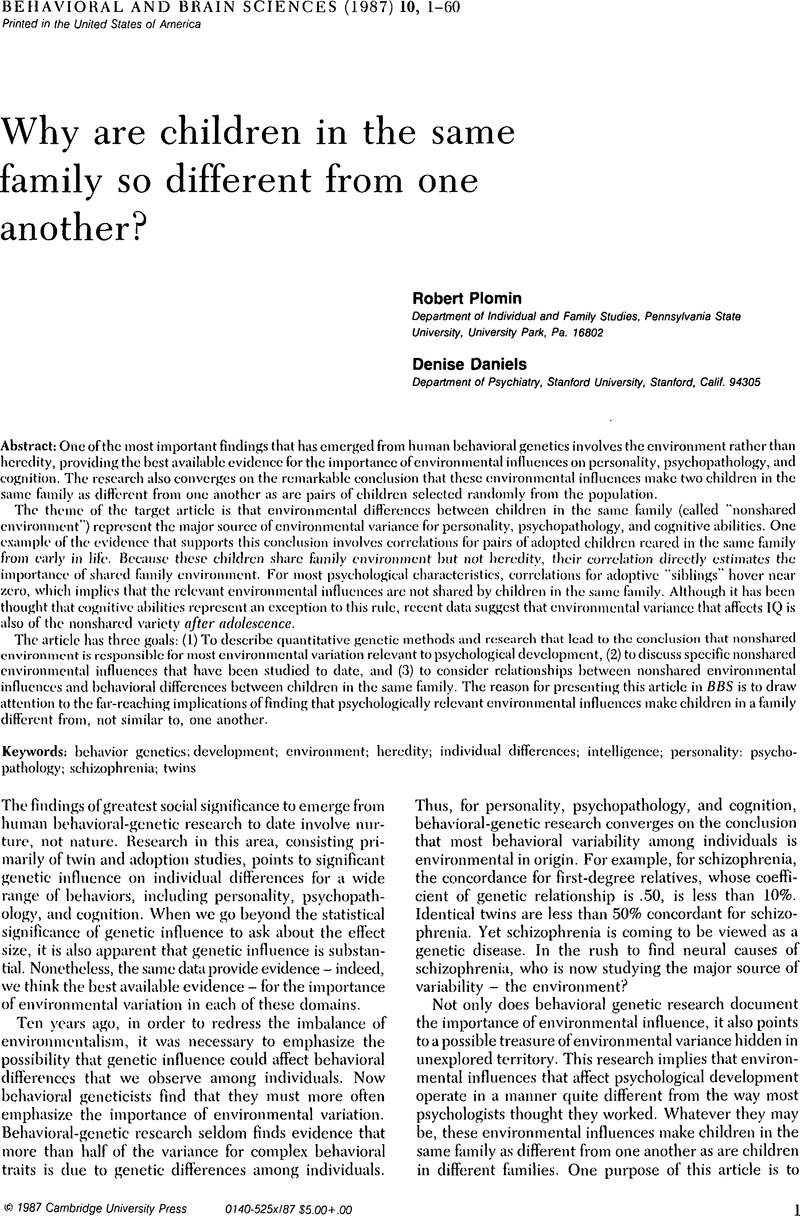Crossref Citations
This article has been cited by the following publications. This list is generated based on data provided by Crossref.
Daruna, Jorge H.
and
Greenberg, Roy D.
1991.
On the source of individual differences within families.
Behavioral and Brain Sciences,
Vol. 14,
Issue. 2,
p.
335.
Plomin, Robert
1991.
Why children in the same family are so different from one another.
Behavioral and Brain Sciences,
Vol. 14,
Issue. 2,
p.
336.
Dudley, R. M.
1991.
Why are adoptees so similar in IQ?.
Behavioral and Brain Sciences,
Vol. 14,
Issue. 2,
p.
336.



